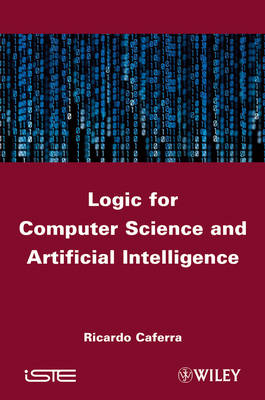
Logic for Computer Science and Artificial Intelligence
ISTE Ltd and John Wiley & Sons Inc (Verlag)
978-1-84821-301-2 (ISBN)
Logic for Computer Science and Artificial Intelligence is the classroom-tested result of several years of teaching at Grenoble INP (Ensimag). It is conceived to allow self-instruction for a beginner with basic knowledge in Mathematics and Computer Science, but is also highly suitable for use in traditional courses. The reader is guided by clearly motivated concepts, introductions, historical remarks, side notes concerning connections with other disciplines, and numerous exercises, complete with detailed solutions, The title provides the reader with the tools needed to arrive naturally at practical implementations of the concepts and techniques discussed, allowing for the design of algorithms to solve problems.
Ricardo Caferra, LIG, CNRS/Grenoble INP, France.
Preface xi
Chapter 1. Introduction 1
1.1. Logic, foundations of computer science, and applications of logic to computer science 1
1.2. On the utility of logic for computer engineers 3
Chapter 2. A Few Thoughts Before the Formalization 7
2.1. What is logic? 7
2.2. Somehistoric landmarks 32
Chapter 3. Propositional Logic 39
3.1. Syntaxand semantics 40
3.2. Themethodof semantic tableaux 54
3.3. Formal systems 64
3.4. Aformal systemforPL(PC) 78
3.5. ThemethodofDavis andPutnam 92
3.6. Semantic trees inPL 96
3.7. The resolutionmethodinPL 101
3.8. Problems, strategies, andstatements 109
3.9. Hornclauses 113
3.10. Algebraic point of view of propositional logic 114
Chapter 4. First-order Terms 121
4.1. Matchingandunification 121
4.2. First-order terms, substitutions, unification 125
Chapter 5. First-Order Logic (FOL) or Predicate Logic (PL1, PC1) 131
5.1. Syntax 133
5.2. Semantics 137
5.3. Semantic tableauxin FOL 154
5.4. Unification in the method of semantic tableaux 166
5.5. Toward a semi-decision procedure for FOL 169
5.6. Semantic trees inFOL 186
5.7. The resolutionmethodinFOL 190
5.8. Adecidable class: themonadic class 202
5.9. Limits: Godel’s (first) incompleteness theorem 206
Chapter 6. Foundations of Logic Programming 213
6.1. Specifications and programming 213
6.2. Toward a logic programming language 219
6.3. Logicprogramming: examples 222
6.4. Computability and Horn clauses 241
Chapter 7. Artificial Intelligence 245
7.1. Intelligent systems: AI 245
7.2. What approaches to studyAI? 249
7.3. Toward an operational definition of intelligence 249
7.4. Can we identify human intelligence with mechanicalintelligence? 251
7.5. Somehistory 254
7.6. Some undisputed themes in AI 256
Chapter 8. Inference 259
8.1. Deductiveinference 260
8.2. An important concept: clause subsumption 266
8.3. Abduction 273
8.4. Inductive inference 278
8.5. Generalization: the generation of inductive hypotheses 284
Chapter 9. Problem Specification in Logical Languages 291
9.1. Equality 291
9.2. Constraints 309
9.3. Second Order Logic (SOL): a few notions 319
Chapter 10. Non-classical Logics 327
10.1. Many-valuedlogics 327
10.2. Inaccurate concepts: fuzzy logic 337
10.3. Modal logics 353
10.4. Some elements of temporal logic 371
Chapter 11. Knowledge and Logic: Some Notions 385
11.1. What is knowledge? 386
11.2. Knowledge and modal logic 389
Chapter 12. Solutions to the Exercises 395
Bibliography 515
Index 517
| Verlagsort | London |
|---|---|
| Sprache | englisch |
| Maße | 163 x 241 mm |
| Gewicht | 921 g |
| Themenwelt | Informatik ► Theorie / Studium ► Künstliche Intelligenz / Robotik |
| Technik ► Elektrotechnik / Energietechnik | |
| ISBN-10 | 1-84821-301-8 / 1848213018 |
| ISBN-13 | 978-1-84821-301-2 / 9781848213012 |
| Zustand | Neuware |
| Haben Sie eine Frage zum Produkt? |
aus dem Bereich


